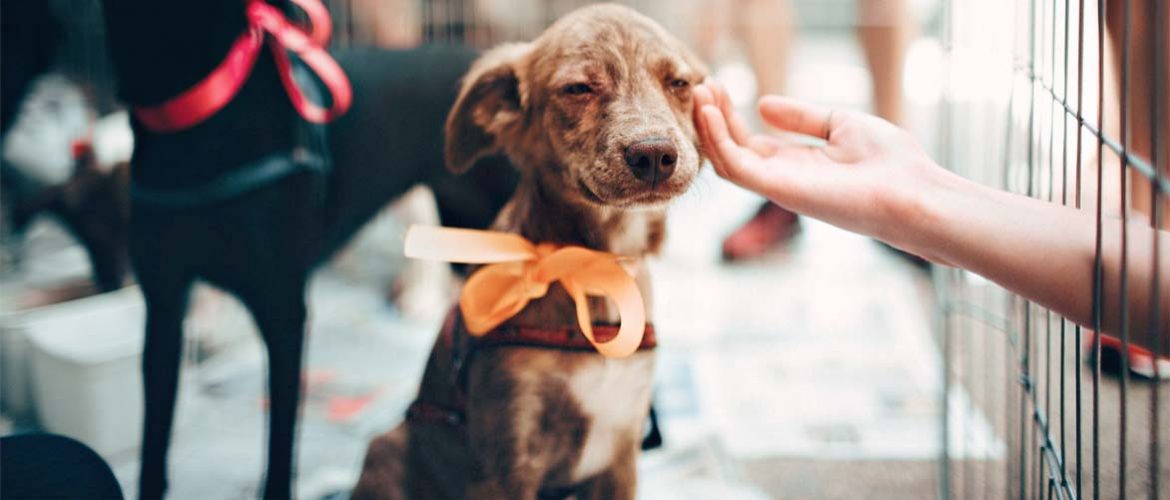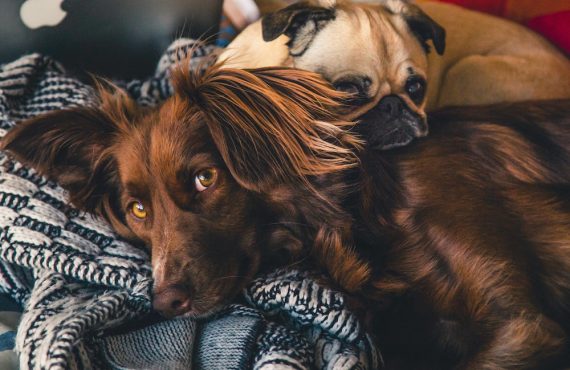New dogs are incredibly exciting additions to a household. The first month that a new pet is home is important for setting up structure and expectations. Here are some tips to help a newly adopted dog transition into your home.
Before you Adopt
To crate or not to crate: Determine if you are going to crate train or not. Crate training is a wonderful way to let a dog have their own personal safe space while you’re away, or during stressful situations. If you decide to crate train, have the crate set up and ready before the new dog comes home.
Let the dog proofing begin! Get down on the dog’s level to help identify any potential problems. Dog-proofing looks different in every household, but it may mean taping up electrical cords, storing chemicals in a different area, putting locks on cabinets and closets that a crafty pooch may figure out how to open, installing pet gates, or removing rugs and plants temporarily.
Get Identification. Pick up a collar, leash, and ID tag with your contact information before you venture out to pick up your new family member.
Train children, too! 🙂 Children should be taught well in advance of bringing home a new pet how they should act around them. Teach them the proper way to approach, and interact with a pet, long before adoption day.
First Day Home
Be car safe. Bring a carrier or crate to drive your new dog home in. They may have never ridden in a car before and if they don’t know what to expect it can be scary or they may get carsick. Confining them in a buckled-in crate is the safest way to transport a pet.
Housebreaking starts immediately. Once home, take your dog out to relieve him or herself before bringing them into the house. Establish a daily routine right away so they can predict when they’ll be able to eat, sleep, potty, and play, which will help speed along the housebreaking process.
Be vigilant. Be sure to watch your new dog carefully for signs of stress and being overwhelmed. Leave the crate door open if crate training, or have a quiet area set up that they can retreat to if it’s too much. This is especially important if you have other pets in the home already. Make introductions slowly and carefully.
Don’t change diets too quickly. Keep your new dog on the same diet they have been eating to avoid too much change too soon. After a week or two, if you wish to change their diet, start slowly. Small amounts of new food blended into the old diet will be less likely to cause tummy issues than switching all at once, which is not recommended. Make a slow introduction of new food:
- Start with mixing 75% old food with 25% new food for 2-3 days.
- If this seems well with your pet, do a 50% combination of old and new foods for 2-3 days.
- Move on to 25% old food and 75% new food, again for 2-3 days.
- If your pet isn’t showing negative symptoms, you’re ready to feed 100% new food.
Ongoing Training
Have patience. You may not see all sides of your dog’s personality right away, and there may be some things that are surprising or frustrating for you. Remember that this is all new and potentially scary for them, and they are depending on you to help them ease into your home and learn the rules. It takes time to undo undesirable habits and to learn new ones.
Socialize. Once you get a feel for their personality and know your dog has all its required vaccines (ask your veterinarian to be sure), socialization is important. Group training sessions, walks in the neighborhood, and dog parks are good places to start. Pay close attention to their body language and be sure to head home if your dog seems overwhelmed.
Seek advice as needed. If your pet has behavioral issues you are unfamiliar with, consult your veterinarian for a recommendation. Professional trainers that use positive reinforcement are wonderful resources to help your pet learn their manners.
Please let us know if there is anything we can help you with during your first weeks home with your new dog. Happy tails!





